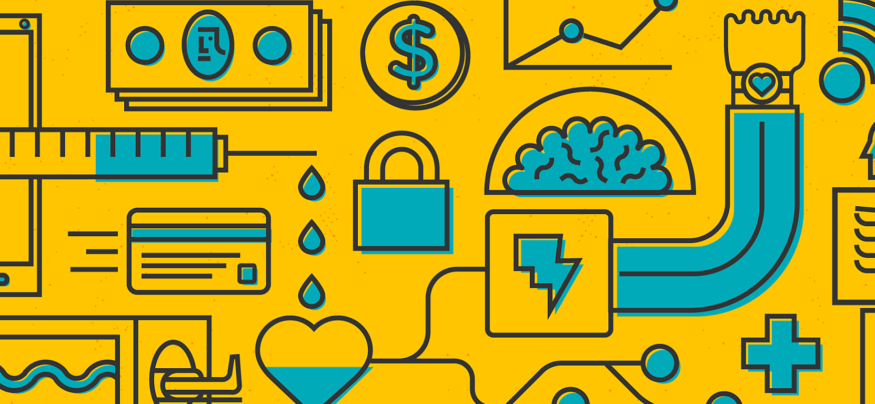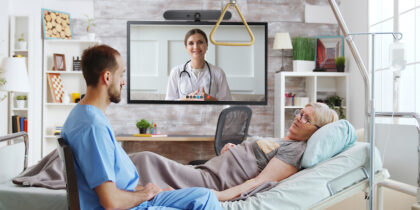As the use of mobile health (or mHealth) expands, threat assessment capabilities have become more critical than ever, and these two trends have dominated the healthcare innovation conversation for some time now. This year promises new applications that surpass traditional use and begin to incorporate elemental technologies into more proactive security initiatives and deeper clinical applications.
ECRI Institute, a nonprofit organization, has released its annual list of the top technologies in the industry, where we’re seeing this change demonstrated in multiple ways.
Threat Assessments Get New Emphasis
Healthcare CIOs and CTOs face increasingly daunting challenges when it comes to cybersecurity, as cybercriminals are becoming aware that health records are worth 10 to 20 times as much as credit card numbers on the black market. The increased use of mobile technology and its integration with EHR/EMR systems have made threat assessments an even more important tool to healthcare leaders and organizations.
This heightened threat means a need for most organizations to expand beyond the security features they have implemented for their network infrastructures and EHRs, and to move into cybersecurity strategies that take threat assessment and mobile security seriously — a necessity that’s been openly acknowledged by the College of Healthcare Information Management Executives (CHIME).
Stroke Units Go Mobile
ECRI put mobile stroke units at the top of their list for good reason — this convergence of telemedicine, mobile and traditional healthcare delivery marks a new age in healthcare technology.
According to the Cleveland Clinic, the goal of the mobile stroke unit (MSU) is “to shorten the time between the onset of stroke-like symptoms and the delivery of ‘clot-busting’ — or thrombolytic — drugs, which must be administered within three hours of when symptoms began or when the patient was last known to be well.” While it resembles an ambulance on the inside, the MSU contains highly specialized staff, medications and equipment strictly dedicated to the treatment of strokes. While the concept is far from widely used now, expect to see similar solutions crop up around the country.
Wearable Sensor Use Expands
As you probably already know, the use of wearables is exploding. This means fertile ground for innovation, as seen in the third item on ECRI’s list — wireless wearable sensors. It’s been predicted that the sensor market in consumer healthcare will be worth $47.4 billion by 2020, expanding at an estimated compound annual growth rate of 5.56 percent between 2014 and 2020.
These sensors, which exist in everything from wristbands to clothing, and even implantables, can coordinate with smartphones, tablets and other mobile devices, thereby encouraging patients to more deeply engage with their healthcare needs. Wearable sensors have been used to address everything from diabetes to congestive heart failure and obesity. As more patient data becomes available, hospitals can use this data to reduce the duration of hospital stays and the frequency of readmissions.
Further Innovations
The list doesn’t stop there, though. Other notable innovations include:
-
Robotic surgery: Vendor competition in robotic surgery solutions is heating up this year, largely due to a shift to tablet-based programs from mainframe ones.
-
Leadless pacemakers: The traditional pacemaker has been shrunk down to a tenth of its size, while at the same beefing up effectiveness. As it stands, though, the new pacemakers are only suitable for about 15 percent of patients.
-
Blue-violet LED fixtures: This innovation promises continued defense against dangerous bacteria in healthcare environments.
-
New cardiovascular drugs: While expensive, three new homecare drugs promise new forms of treatment for cardiac patients.
-
Spectral computed tomography: New tools and marketing have revived this technology. They now offer deeper physiologic function of soft tissue thanks to a dual-layer detector.
-
Injected bioabsorbable hydrogel (SpaceOAR): This gel protects healthy organs from radiation treatment and so far appears to be highly effective.
-
Warm donor organ perfusion systems: Two-thirds of organs are never used by hospitals because of compromised viability around harvesting and transport. This innovation directly addresses that issue.
New developments in digital healthcare lead to increased patient satisfaction. Find out about more ways technology is improving healthcare here.







